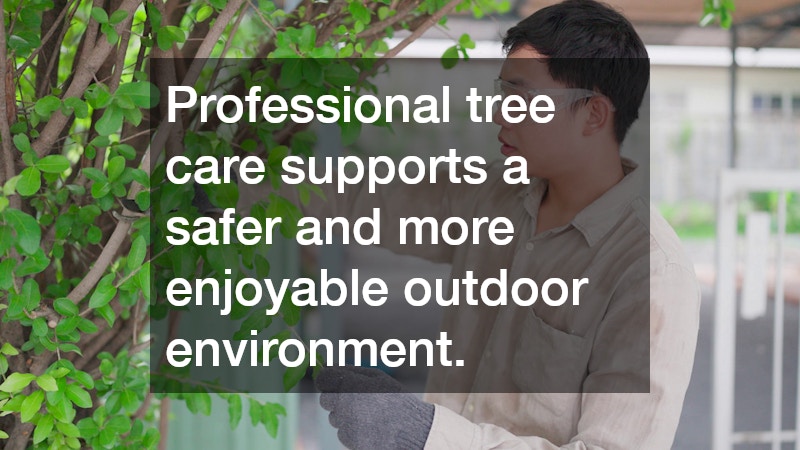Tree Removals vs Tree Trimming Whats the Difference?
Understanding the difference between tree removals and tree trimming is essential for maintaining healthy and safe outdoor spaces. While both services involve working with trees, they serve different purposes and require distinct approaches. Making the right choice helps protect your property, enhances safety and supports the long-term health of your trees.
Across Australia, trees face challenges like extreme weather, pests and diseases. Knowing when to trim and when removal is necessary ensures your garden remains attractive and secure.
What Is Tree Trimming?
Tree trimming, often called pruning, is the process of selectively cutting branches to improve a tree’s structure, health and appearance. Trimming removes dead, diseased or overgrown limbs to allow sunlight and air to circulate within the canopy. This reduces the risk of decay and encourages new growth.
Trimming also helps manage the size of trees so they do not interfere with power lines, roofs or pathways. It can prevent branches from becoming hazardous during storms. Regular pruning is a proactive way to keep trees healthy and attractive, and it can extend their lifespan.
Professional arborists use specialised tools and techniques to trim trees without causing unnecessary damage. They understand how to make cuts that promote healing and reduce stress on the tree.
What Are Tree Removals?
Tree removals refer to the complete cutting down and removal of a tree from a property. This option is usually considered when a tree is dead, severely diseased or structurally compromised. It is also necessary when a tree poses a safety risk to people or property.
Removal involves cutting the tree at its base and safely dismantling the trunk and branches. Stump grinding or extraction is often part of the process to prevent regrowth and clear the area for other uses.
Unlike trimming, which maintains and improves a tree’s health, removal is a permanent solution reserved for cases where preservation is not possible or practical.
When Should You Consider Tree Removal?
Several signs indicate tree removals might be required. Large cracks in the trunk, extensive root damage or fungal growth can signal instability and decay. Dead trees or those leaning dangerously can fall unexpectedly, posing serious hazards during storms or high winds.
Trees that interfere with construction projects, underground utilities or drainage systems may need to be removed to prevent damage. Sometimes, ongoing issues with pests or disease that cannot be controlled by trimming warrant removal to protect neighbouring trees and plants.
If a tree shows signs of poor health, professional arborists can assess whether trimming or removal is the safer option.
The Importance of Professional Assessment
Both tree trimming and tree removals carry risks and require expert handling. Incorrect trimming can harm trees by leaving them vulnerable to pests and disease or causing structural weakness. Unsafe removal practices risk damage to property, power lines or injury to people.
Certified arborists have the skills and equipment to perform these tasks safely and in line with Australian regulations. They conduct thorough inspections to evaluate tree health, structural integrity and risks before recommending the best course of action.
A professional assessment also ensures compliance with local council guidelines, which may restrict the removal of certain trees without approval.
Environmental and Aesthetic Factors
Tree trimming preserves mature trees and maintains their natural shape, which is important for garden aesthetics and local wildlife habitats. Birds and insects rely on trees for shelter and food, so preserving healthy trees benefits biodiversity.
In contrast, tree removals open up space for new planting or landscaping designs. Removing dead or hazardous trees can improve sunlight and airflow in the garden, helping other plants thrive. It also prevents damage to neighbouring trees and structures caused by falling limbs or roots.
Balancing environmental care with safety concerns is vital for sustainable property management.
Safety and Liability Considerations
Overgrown or unstable trees present safety hazards to homeowners, visitors and neighbours. Branches that hang over roofs, driveways or fences risk falling and causing injury or property damage. Roots can disrupt foundations, pipes or paving.
Ignoring these risks can lead to costly repairs or legal liability if someone is injured. Timely tree removals or trimming by professionals reduce these dangers and protect your investment.
In areas prone to bushfires or storms, removing vulnerable trees may be part of risk management plans. Properly maintained trees are less likely to become fire hazards or cause road blockages.
Cost and Timing Differences
Tree trimming is generally less expensive than full removal because it involves less labour and equipment. It is also quicker and less disruptive, often completed in a few hours, depending on the tree size.
Tree removals require more time, expertise and machinery such as cranes or wood chippers. Stump grinding or clearing the site adds to the cost. However, removal may save money long term by preventing damage and eliminating ongoing risks.
The best timing for trimming is usually during the tree’s dormant season or early growth phases. Removal timing depends on urgency, but should avoid nesting seasons or periods of heavy rain to reduce environmental impact.
Knowing the difference between tree trimming and tree removal helps you care for your trees responsibly and protect your property. Trimming is a vital maintenance practice for healthy, safe and attractive trees. Removal is a necessary but last-resort solution for dead, diseased or dangerous trees.
Consulting a qualified arborist ensures the right approach based on your tree’s condition, safety requirements and local regulations. Their expertise helps maintain the beauty, safety and value of your garden for years to come.
Whether your needs are routine pruning or urgent removal, professional tree care supports a safer and more enjoyable outdoor environment. Making informed decisions about your trees is an investment in your home and community well-being.

